The electric vehicle market continues to evolve rapidly, with numerous manufacturers vying for consumer attention. Two notable contenders in the SUV segment are the Kia EV3 and the Nissan Ariya. Both vehicles offer innovative technology, impressive performance, and the sustainability that electric drivers crave. In this article, we’ll compare the two models in various aspects to help you decide which one fits your lifestyle better.
Kia EV3 vs Nissan Ariya – Which model is better for everyday use?
Everyday use, family trips or long-distance drives – here’s where the differences show.
Discover whether Kia EV3 or Nissan Ariya fits your lifestyle better.
Performance and Powertrain
Both the Kia EV3 and Nissan Ariya showcase potent electric powertrains, but they take different approaches to delineate their strengths. The Kia EV3 is offered with a choice of two battery capacities: 58.3 kWh and 81.4 kWh, providing a power output of 204 HP (150 kW) and torque of 283 Nm. In terms of acceleration, the EV3 is capable of reaching 0-100 km/h in as little as 7.5 seconds, with a top speed capped at 170 km/h. The electric range varies from 436 km to 605 km based on the battery size.
On the other hand, the Nissan Ariya elevates the competition with multiple powertrain options, featuring outputs ranging from 218 HP (160 kW) to a heart-pounding 435 HP (320 kW) in its top-tier variant. Its torque reaches up to 600 Nm, and it can achieve 0-100 km/h in just 5 seconds. The Ariya's battery options consist of 63 kWh and 87 kWh packs, delivering an electric range from 402 km to 531 km.
Design and Dimensions
When it comes to design, both SUVs exhibit a modern and appealing aesthetic. The Kia EV3 spans 4300 mm in length, 1850 mm in width, and stands at 1560 mm to 1570 mm in height. Its trunk capacity is generous at 460 L, making it practical for everyday use.
The Nissan Ariya is slightly larger, measuring 4595 mm in length, while maintaining a width of 1850 mm and a height of 1650 mm. The trunk capacity, however, is slightly less at 415 L for the base model. This may influence the decision for buyers who prioritize cargo space.
Charging and Range Efficiency
Charging technology is a crucial aspect of any electric SUV, and both the Kia EV3 and Nissan Ariya make strides in this domain. The EV3’s efficiency is commendable, with consumption ranging from 14.9 kWh to 16.2 kWh per 100 km, depending on the variant, showcasing its appeal for long-distance drivers.
The Nissan Ariya’s consumption ranges from 17.7 kWh to 24.5 kWh per 100 km, reflecting a heavier powertrain in some variants. While this may seem less efficient than the Kia, it’s essential to consider the performance boost and power options available in the Ariya, which could justify the higher energy usage for drivers looking for a thrilling driving experience.
Technological Innovations
Both vehicles come integrated with advanced technology to enhance the driving experience. The Kia EV3 is equipped with a suite of driver-assist systems, including autonomous emergency braking and lane-keeping assist, ensuring safety is a priority.
Nissan takes this further with its ProPILOT Assist technology, which provides semi-autonomous driving capabilities, including adaptive cruise control and lane centering. The Ariya also features a cutting-edge infotainment system with a larger touchscreen and a more sophisticated interface compared to the Kia.
Final Thoughts: Which to Choose?
Ultimately, the choice between the Kia EV3 and Nissan Ariya boils down to individual preferences and driving needs. The Kia EV3 offers impressive efficiency and a strong electric range, making it an excellent choice for long-distance sustainability. Meanwhile, the Nissan Ariya's high-powered variants, advanced technology, and a larger interior may well appeal to performance enthusiasts.
In conclusion, both offerings enrich the electric SUV segment, catering to varied consumer needs, making them worthy contenders as you contemplate your next electric vehicle purchase.
Here’s where it gets real: The technical differences in detail
Costs and Efficiency:
When it comes to price and running costs, the biggest differences usually appear. This is often where you see which car fits your budget better in the long run.
Kia EV3 has a evident advantage in terms of price – it starts at 30800 £, while the Nissan Ariya costs 37300 £. That’s a price difference of around 6429 £.
In terms of energy consumption, the advantage goes to the Kia EV3: with 14.90 kWh per 100 km, it’s somewhat more efficient than the Nissan Ariya with 17.70 kWh. That’s a difference of about 2.80 kWh.
As for range, the Kia EV3 performs slightly better – achieving up to 605 km, about 74 km more than the Nissan Ariya.
Engine and Performance:
Under the bonnet, it becomes clear which model is tuned for sportiness and which one takes the lead when you hit the accelerator.
When it comes to engine power, the Nissan Ariya has a convincingly edge – offering 435 HP compared to 204 HP. That’s roughly 231 HP more horsepower.
In acceleration from 0 to 100 km/h, the Nissan Ariya is significantly quicker – completing the sprint in 5 s, while the Kia EV3 takes 7.50 s. That’s about 2.50 s faster.
In terms of top speed, the Nissan Ariya performs a bit better – reaching 200 km/h, while the Kia EV3 tops out at 170 km/h. The difference is around 30 km/h.
There’s also a difference in torque: Nissan Ariya pulls clearly stronger with 600 Nm compared to 283 Nm. That’s about 317 Nm difference.
Space and Everyday Use:
Beyond pure performance, interior space and usability matter most in daily life. This is where you see which car is more practical and versatile.
Both vehicles offer seating for 5 people.
In curb weight, Kia EV3 is barely noticeable lighter – 1800 kg compared to 1980 kg. The difference is around 180 kg.
In terms of boot space, the Nissan Ariya offers minimal more room – 468 L compared to 460 L. That’s a difference of about 8 L.
In maximum load capacity, the Nissan Ariya performs slight better – up to 1350 L, which is about 99 L more than the Kia EV3.
When it comes to payload, Kia EV3 a bit takes the win – 470 kg compared to 420 kg. That’s a difference of about 50 kg.
Who wins the race?
The Nissan Ariya proves to be leaves the rival little chance and therefore becomes our DriveDuel Champion!
Nissan Ariya is the better all-rounder in this comparison.
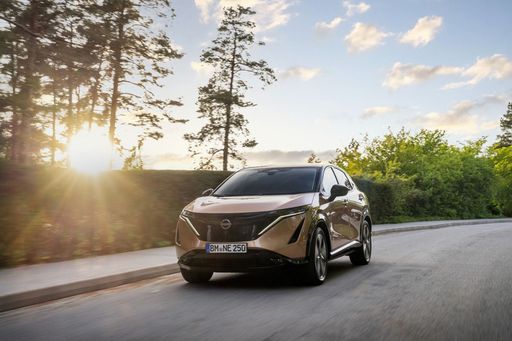 @ Nissan Motor Corporation
@ Nissan Motor Corporation
Nissan Ariya
Kia EV3
The Kia EV3 arrives as a cheeky, practical electric compact that manages to feel both premium and playful, delivering crisp handling and a roomy cabin that's perfect for urban life. With smart tech, friendly styling and sensible pricing, the EV3 is the kind of car that makes switching to electric feel like a no-brainer without asking you to give anything important up.
details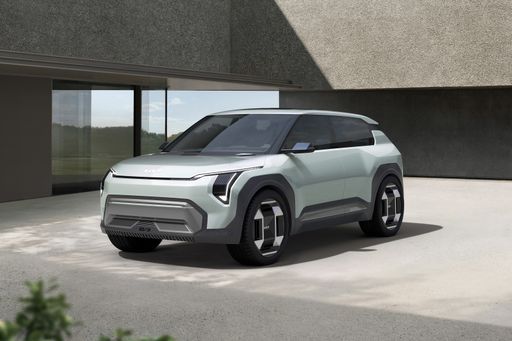 @ Kia Corporation
@ Kia Corporation
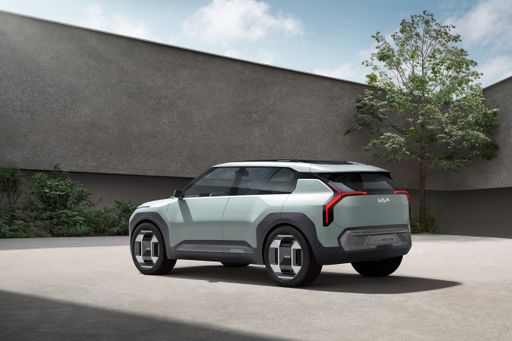 @ Kia Corporation
@ Kia Corporation
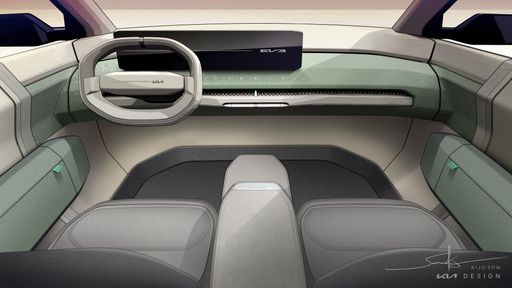 @ Kia Corporation
@ Kia Corporation
Nissan Ariya
The Nissan Ariya elevates the electric vehicle segment with its sleek design and advanced technology, providing a modern driving experience. Seamlessly blending comfort with performance, the Ariya offers an inviting and spacious interior that caters to both driver and passengers. Its innovative features make it a strong contender in the growing market for eco-friendly yet stylish automobiles.
details @ Nissan Motor Corporation
@ Nissan Motor Corporation
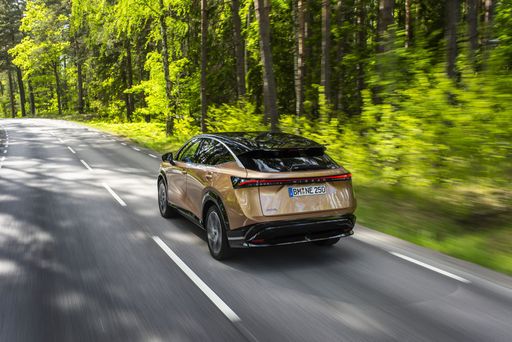 @ Nissan Motor Corporation
@ Nissan Motor Corporation
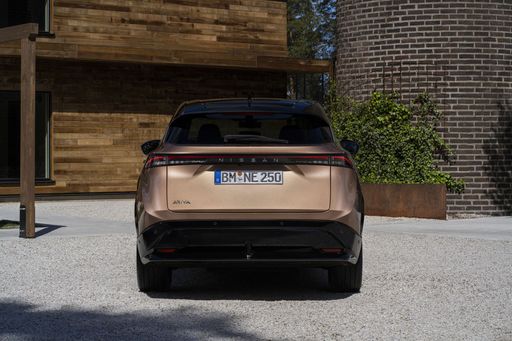 @ Nissan Motor Corporation
@ Nissan Motor Corporation
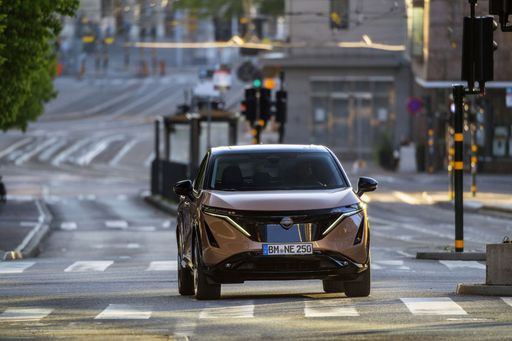 @ Nissan Motor Corporation
@ Nissan Motor Corporation
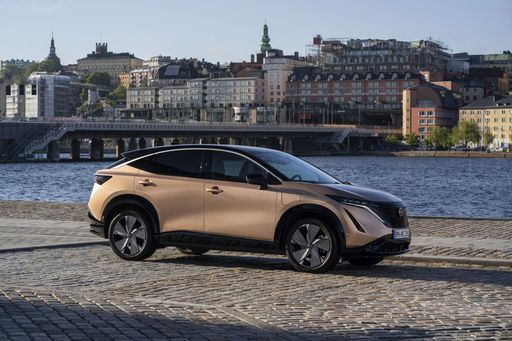 @ Nissan Motor Corporation
@ Nissan Motor Corporation
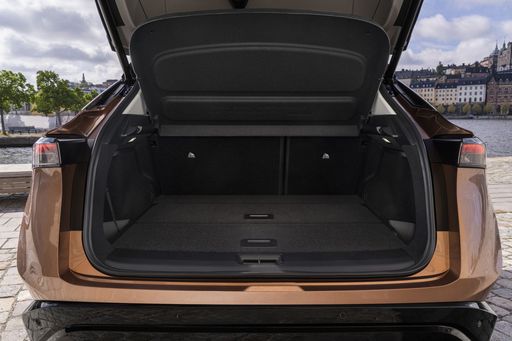 @ Nissan Motor Corporation
@ Nissan Motor Corporation
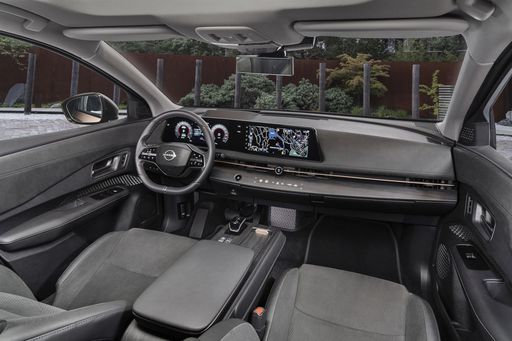 @ Nissan Motor Corporation
@ Nissan Motor Corporation
 @ Kia Corporation
@ Kia Corporation
|
 @ Nissan Motor Corporation
@ Nissan Motor Corporation
|
|
|
|
Costs and Consumption |
|
|---|---|
|
Price
30800 - 41700 £
|
Price
37300 - 54800 £
|
|
Consumption L/100km
-
|
Consumption L/100km
-
|
|
Consumption kWh/100km
14.9 - 16.2 kWh
|
Consumption kWh/100km
17.7 - 24.5 kWh
|
|
Electric Range
436 - 605 km
|
Electric Range
402 - 531 km
|
|
Battery Capacity
58.3 - 81.4 kWh
|
Battery Capacity
63 - 87 kWh
|
|
co2
0 g/km
|
co2
0 g/km
|
|
Fuel tank capacity
-
|
Fuel tank capacity
-
|
Dimensions and Body |
|
|---|---|
|
Body Type
SUV
|
Body Type
SUV
|
|
Seats
5
|
Seats
5
|
|
Doors
5
|
Doors
5
|
|
Curb weight
1800 - 1885 kg
|
Curb weight
1980 - 2259 kg
|
|
Trunk capacity
460 L
|
Trunk capacity
415 - 468 L
|
|
Length
4300 - 4310 mm
|
Length
4595 mm
|
|
Width
1850 mm
|
Width
1850 mm
|
|
Height
1560 - 1570 mm
|
Height
1650 mm
|
|
Max trunk capacity
1251 L
|
Max trunk capacity
1280 - 1350 L
|
|
Payload
470 kg
|
Payload
396 - 420 kg
|
Engine and Performance |
|
|---|---|
|
Engine Type
Electric
|
Engine Type
Electric
|
|
Transmission
Automatic
|
Transmission
Automatic
|
|
Transmission Detail
Reduction Gearbox
|
Transmission Detail
Reduction Gearbox
|
|
Drive Type
Front-Wheel Drive
|
Drive Type
Front-Wheel Drive, All-Wheel Drive
|
|
Power HP
204 HP
|
Power HP
218 - 435 HP
|
|
Acceleration 0-100km/h
7.5 - 7.9 s
|
Acceleration 0-100km/h
5 - 7.6 s
|
|
Max Speed
170 km/h
|
Max Speed
160 - 200 km/h
|
|
Torque
283 Nm
|
Torque
300 - 600 Nm
|
|
Number of Cylinders
-
|
Number of Cylinders
-
|
|
Power kW
150 kW
|
Power kW
160 - 320 kW
|
|
Engine capacity
-
|
Engine capacity
-
|
General |
|
|---|---|
|
Model Year
2024
|
Model Year
2022 - 2025
|
|
CO2 Efficiency Class
A
|
CO2 Efficiency Class
A
|
|
Brand
Kia
|
Brand
Nissan
|
What drive types are available for the Kia EV3?
The Kia EV3 is offered with Front-Wheel Drive.
The prices and data displayed are estimates based on German list prices and may vary by country. This information is not legally binding.
